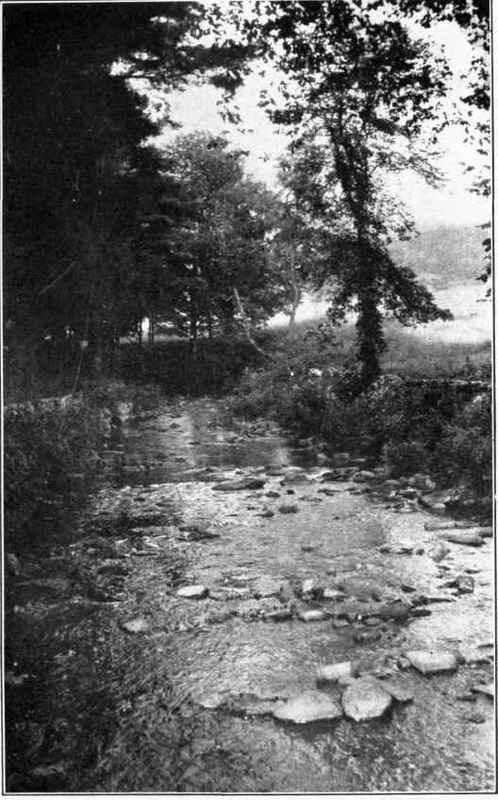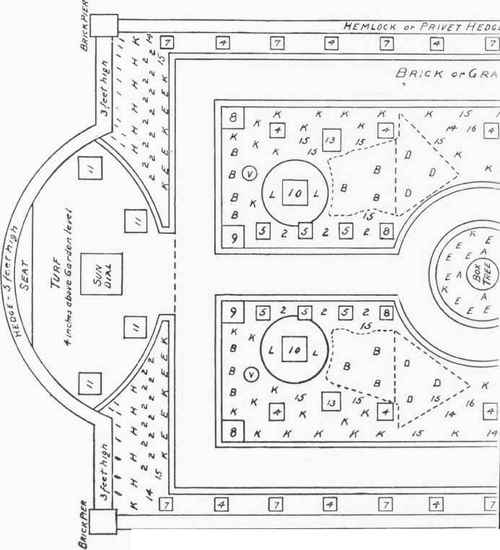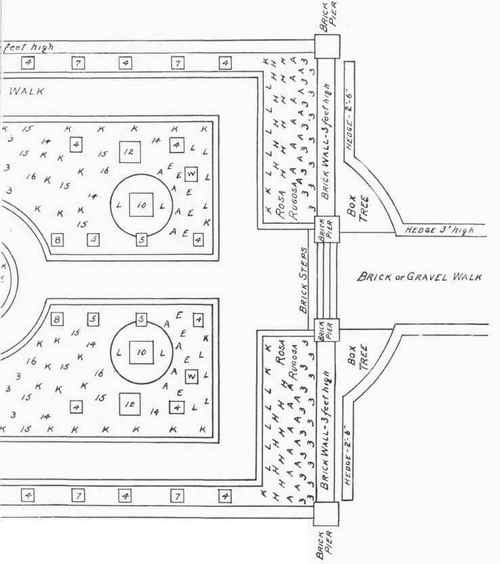Gladioli
Description
This section is from the book "Common Sense Gardens, How To Plan And Plant Them", by Cornelius V. V. Sewell. Also available from Amazon: Common Sense Gardens: How To Plan And Plant Them.
Gladioli
Gladioli, the familiar Summer-flowering bulbs may be easily grown, either in the kitchen garden for cutting or for stately specimens of bloom in the flower garden. No place has been assigned to them in the plan of planting as their location will have to be left to the judgment of the proprietor, who may best use them for filling in bare spots that unexpectedly appear. Gladioli should be planted in succession from the middle of May to the tenth of July. For the flower garden use Lemoines, Childsii and Groff's Hybrids, but for the cutting bed any of the ordinary mixtures that cost from a dollar and a quarter to a dollar and a half a hundred will do, and they will be found to be much surer than the fancy strains and altogether satisfactory, although they do not produce such large and showy spikes of bloom. The bulbs should be taken up in the Fall and stored in a dry cellar where the temperature will not go below thirty-five degrees.

A good Opportunity for Naturalizing;.
Cosmos should be kept out of the garden. Blooms very late and is generally caught by frost.
Nasturtiums; tall growing to train over the hedge. Nasturtiums should be planted where they are to be used as they are badly checked when transplanted.
Petunias; double varieties of different colours.
Poppies; Shirley; double varieties; Mephisto; Maid of the Mist.
Stocks; Ten Weeks and late flowering sorts; rather uncertain about coming into bloom.
Wall Flower; Paris is a single annual with the peculiarly sweet Wallflower scent; easy to grow and attractive along the path.
Sunflower; single Russian; double Globe Flowered.
The design for planting the flower garden shown in this chapter is simple and easily carried out. The material for the enclosure should first be decided upon, and if the garden is on a lawn a hedge should be used. Pickets, or a brick wall with pickets, are better where the space is uneven and closely surrounded by trees, for if built on a level, open lawn they stand out a little too conspicuously.
The paths should be dug out to a depth of two or two and a half feet and filled in with stone. Made thus, they act as blind drains and carry off the superfluous water from the flower beds. The last three or four inches of stone should be broken up into small pieces and well packed. If bricks are used for the paths they should be set in a bed of sand three inches deep at least and well hammered down. An English brickmason is the best man to lay such paths; he will understand their construction perfectly. The best bond to use is herringbone, the way the English walks are laid.
The next best thing to brick is white gravel, the kind that is used on tarred roofs. For this gravel make a bed of one and a half inches of clay on top of the stone filling and roll the first dressing well in. Finish off with two inches of a smaller size and keep it loosened up with an iron rake. Paths made of white gravel are a good finish for the garden, not quite as good, as brick for the colour does not combine so well with the flowers, but much better than bluestone which is poor stuff; the colour is bad and its associations commonplace. The coarse is painful to walk on, and the fine screenings dirty and sticky after a rain.

Iris on the Edge of the Lawn.
Both brick and white gravel are always dry even immediately after the hardest shower, and gravel particularly is so clean that it does not soil the most delicate gown with which it comes in con-tact. Gravel screened to any size can be obtained on Long Island at about the same cost as bluestone or traprock.
In a common sense garden there is not much room for ornaments. Even a Rose pergola should be kept out of it if it is small, say under sixty by thirty feet. If your heart is set on having an arbour, construct one in some other part of the grounds and let it form the basis of a Rose garden. A sundial is really better placed on a terrace or in an alcove off the path that leads to the garden. It may be set in the middle of the path if there is room, but do not place it in a flower bed. A sundial arranged with a background of Lilies is very effective. The round bed in the centre of the Court of Honour is an appropriate place, but I should rather see an old Box tree there. At least try a Box, and if you are not satisfied with its appearance you can replace it with a sundial. If a sundial is set on a raised bed of turf, naturalize Narcissi around the base and grow Crocuses and Narcissi through the turf of the bed.


Plan of Planting
A Delphinium B Foxglove D Sweet William E Lilies (White) H Lilies (Orange)
K Phlox L Lilies (Tiger) V White Lilac W Laburnum
1 Campanula marc
2 Campanula medi
3 Campanula Pyra
4 Japanese Iris lower Garden
7 Nasturtium
8 Peony
10 Hemerocallis Fulva
11 Funkia Alba
13 Calyeanthus
14 Hollyhocks
15 Dahlias l6 Rudbeckia
There should be a seat in the garden at the end of a path near a hedge. Do not use rustic or Italian stone seats. Very good and simple garden benches are made in England, and I know of nothing better for a small garden than one of these. Several of these benches are pictured on page 371. Your carpenter could build one, but there are nurserymen who have the working designs and make a specialty of constructing them at a reasonable price. They should be painted white or green.
Do not place vases or pots or tubs of flowers in the garden or near it. Palms and other exotics that are used in the house in Winter should be summered in some secluded spot; you will enjoy them all the more when they come home. Hanging baskets too, are obsolete decorations and should be sent to the bourne from which nothing ever returns, along with the iron stag and bronzed Indian.
Continue to:


